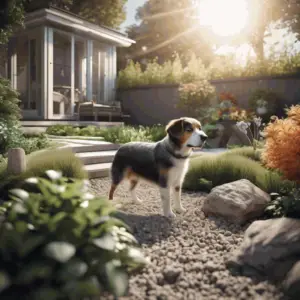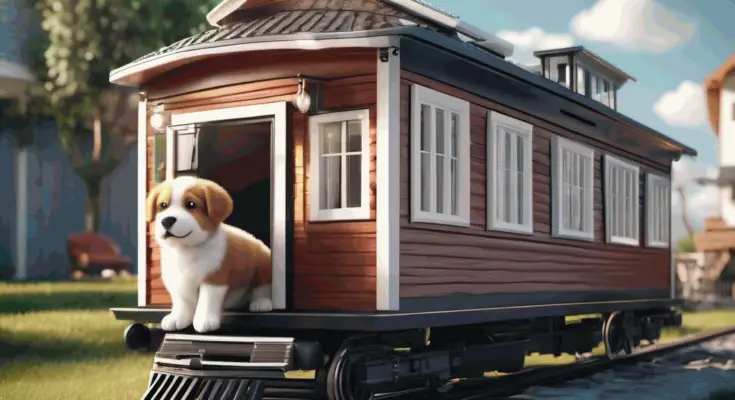Bringing a furry pet into your house is a happy event. But as a new pet owner, you may be wondering how to train your dog at home. Fortunately, there are plenty of valuable dog training tips for beginners like you to follow. With patience, consistency, and positive reinforcement, you can effectively teach your canine companion basic obedience commands, socialize them with other dogs, and address any common behavior problems they may exhibit while keeping them happy and healthy. This section will provide expert dog training tips that will help you establish a strong foundation for training your furry friend at home.
Key Takeaways
- Establishing a consistent training routine is critical to successful dog training at home.
- Positive reinforcement is a highly effective training method utilizing treats, praise, and clicker training techniques.
- Basic obedience commands like sit, stay, and come are essential for your dog’s development.
- Crate training can be a valuable tool for housebreaking.
- Dogs require proper socialization to boost their confidence and become well-rounded companions.
Understanding Your Dog’s Behavior
Before delving into the training process, it is crucial to understand your furry friend’s behavior. Dogs communicate differently than humans, so it’s essential to learn their body language and the meaning behind their actions.
Some common dog behaviors you might observe are chewing, barking, whining, jumping, and digging. Each of these behaviors has a different meaning, and it’s crucial to understand what your dog is trying to tell you.
For instance, dogs might chew furniture or shoes when they are bored or anxious. Prolonged barking might indicate frustration or a health issue. Understanding these behaviors and their underlying reasons can help you communicate with your dog effectively.
To interpret your dog’s behavior accurately, observe them closely and note their expressions and body language. Observe their posture, tails, and ears. For example, a wagging tail might not always indicate a happy dog; it can also indicate anxiety or nervousness.
Establishing a Routine
With this knowledge, you can respond accordingly, reinforce positive behaviors, and correct negative ones. It’s important to remember that dog training tips take patience, consistency, and positive reinforcement.
Creating a routine is essential for successful dog training. Dogs thrive on consistency and structure, so establishing a reliable schedule will optimize your pet’s learning process.
Start by setting up a time for feeding, exercising, and potty breaks that work with your lifestyle. Stick to the same time each day to signal to your dog when it’s time to eat, play, and rest.
| Activity | Frequency | Duration |
| Mealtime | 2-3 times per day | 10-30 minutes |
| Exercise | At least once per day | 30 minutes – 1 hour |
| Potty Breaks | Every 2-3 hours | 5-10 minutes |
| Training Sessions | 2-3 times per day | 5-10 minutes each session |
Make sure to include dog training tips sessions in your routine, using positive reinforcement techniques to encourage good behavior. Keep training sessions short to avoid overwhelming your dog and always end on a high note to reinforce positive associations.
Consistency is key, so be sure to stick to the routine you create. With time and dedication, your dog training tips will learn quickly and develop positive habits that will last a lifetime.
Positive Reinforcement Techniques
When it comes to dog training, positive reinforcement techniques are highly effective. Rather than punishing undesirable behaviors, positive reinforcement aims to reward and encourage positive behavior. By using treats, praise, and clicker training, among other methods, you can promote the behaviors you want to see in your dog. Remember, consistency is key for any training technique to be effective!
| Technique | How to use it |
| Using treats | When your dog exhibits the desired behavior, give them a treat immediately to reinforce that behavior. |
| Praise and affection | Offer verbal praise, petting, or other forms of affection when your dog behaves appropriately. |
| Clicker training | Use a clicker to make a distinct sound when your dog does something right, then provide a treat as a reward. This reinforces the idea that doing the right thing equals a positive outcome. |
By consistently using positive reinforcement techniques, you can help your dog learn the behaviors you want them to exhibit. Remember to reward those behaviors with treats, praise, and affection, and you’re sure to have a happy, well-trained pup!

Basic Obedience Commands
Teaching your dog basic obedience commands, such as sit, stay, and come, is essential for their safety and your peace of mind. Here are some step-by-step instructions to train your furry friend to obey these important commands:
- Sit: Hold a treat above your dog’s nose and move it up and back towards their tail, causing them to sit naturally Declare “sit” and hand them the candy.
- Stay: Start with your dog in the “sit” position. Hold your hand up, palm facing out, and say “Stay.” Take a step back, then return and reward them with a treat for staying put. Gradually increase the distance and time before giving them a treat.
- Come: Put your dog on a leash and walk several steps away. Then say “come” and gently pull the leash towards you. When they reach you, reward them with a treat and praise them.
Remember to use positive reinforcement and repeat these commands regularly to help your dog develop reliable obedience skills.
Crate Dogs Training Tips
Crate training is a popular method to help dogs adjust to a new home, give them a safe space to retreat, and aid in potty training. When done correctly, crate training can be a simple and effective tool. Follow these crate dog training tips to ensure success:
- Choose the Right Crate: The crate should be the correct size for your dog to stand up, turn around, and lie down comfortably. If the crate is too big, your dog may be tempted to use one area as a restroom. Choose a crate made of durable material and with proper ventilation.
- Introduce the Crate: Allow your dog to explore the crate by placing treats or toys inside. Praise your dog when they enter the crate. Gradually encourage your dog to stay inside for longer periods with the door open.
- Associate the Crate with Positive Experiences: Feed your dog meals inside the crate and offer treats when your dog enters. This helps your dog associate the crate with positive experiences.
- Make it a Safe Space: Ensure the crate is a safe and comfortable space. Include a few toys and a cozy blanket or bed. Avoid putting the crate in an isolated area of the house.
- Use Positive Reinforcement: When it’s time for your dog to go inside the crate, use positive reinforcement by offering treats or praise. Avoid forcing your dog into the crate or punishing them for not wanting to go inside the crate.
- Gradually Increase Crate Time: Start with short periods and gradually increase the time your dog spends inside the crate. Avoid leaving your dog in the crate for long periods, and never use the crate as punishment.
- Potty Training: Use the crate as a potty training tool by taking your dog outside immediately after they leave the crate. Avoid leaving your dog in the crate for too long, as they may be forced to use it as a restroom.
Remember to be patient and consistent. Crate training takes time, but your dog will learn to comfortably settle in their safe and secure space with proper training and positive reinforcement.
Leash Dogs Training Tips and Walking Etiquette
Walking your furry companion is an excellent way for you both to exercise and bond. However, going on walks with an untrained dog can be stressful and even dangerous. Leash training your dog is one of the most crucial training sessions you can have with your furry friend, enabling you to maintain control and ensure maximum safety during walks.
Leash Training Techniques
Begin by introducing your dog’s training tips to their leash. Allow them to sniff and explore it – don’t force it upon them. Once they’re familiar with the leash, please attach it to their collar and let them drag it around the house. This approach will help them get used to the feeling of the leash and understand that it is a part of their routine.
Next, pick up the leash and walk around the house and yard, allowing your dog to walk beside you. When your dog follows you on a loose leash, reward them with treats and praise. Gradually increase your walking time on the leash, encouraging them to walk alongside you. Remember to never pull or drag your dog along – this can be painful for them and potentially damage your relationship with them.
Walking Etiquette
In addition to proper leash training, teaching your dog walking etiquette ensures an enjoyable experience for both of you. Before stepping out, ensure your dog has relieved themselves and is physically ready for a walk. Start walking with your dog on your side and avoid letting them pull or lead you. Always remind them to stay beside you and reward them for good behavior.
It’s also essential to understand the rules and regulations of the areas you’ll be walking in. Some parks, neighborhoods, and other areas have strict rules for dogs, like leash laws or waste clean-up etiquette. By obeying these rules and being a responsible dog owner, you can avoid potential legal issues and maintain good relationships with your neighbors.
By practicing effective leash training and walking etiquette, you’ll have a well-behaved and happy partner to accompany you. Remember, patience, consistency, and positive reinforcement are key to building a healthy and secure relationship with your furry companion.
Addressing Common Behavior Problems
Training your dog might face some setbacks, such as behavior problems which make the process more challenging. Here are some common behavior issues dogs display, with effective solutions to help you correct them:
Jumping
Many dogs jump on people out of excitement or to get their attention, but it’s essential to train your dog to stop this behavior. Start by ignoring your dog when they jump and rewarding them when all four paws are on the ground. Consistently reinforcing this behavior will establish a new routine and eliminate jumping in normal circumstances.
Chewing
Dog’s training tips naturally explore their environment through chewing, but it can be destructive when they chew on furniture or shoes. Provide your dog with safe chew toys and consistently redirect their attention when they begin to chew on inappropriate items. Avoid punishing them, instead providing positive reinforcement for good behavior and providing supervision when necessary.
Excessive Barking
Excessive barking can disturb your neighbors, making it necessary to correct this behavior. Identify what causes your dog to bark and remove the source of the problem. Provide plenty of physical and mental stimulation, such as regular exercise and interactive toys. Startle your dog with a loud noise like clapping when they bark excessively and reward them when they stop. Consistency is key when training your dog not to bark excessively.
Implementing these solutions to common behavior problems will make training more successful and enjoyable for you and your furry friend.
Socializing Your Dog
Socializing your dog’s training tips is an essential component of their emotional and mental development. Not only does it build their confidence and trust in various environments, but it also helps them become well-rounded companions. Here are some tips on how to socialize your puppy:
Start Early
The ideal time to begin socializing your puppy is between 3 and 14 weeks old. During this critical period, puppies are more receptive to new experiences, and it’s easier to shape their behavior positively. In their early development, introducing your puppy to different people, environments, and other animals will help them feel comfortable and confident in the world.
Positive Experiences
Make sure your puppy’s socialization experience is positive and rewarding. Encourage them with treats, toys, and lots of praise to help them associate these new experiences with something enjoyable. Remember that any interactions your dog has during their early development will shape their behavior in the future.
Gradual Introduction
Gradually introduce your puppy to different environments and situations. Overwhelming your dog with too much too soon can be counterproductive. Start with controlled interactions and gradually introduce them to more challenging situations. It’s essential to monitor your dog’s behavior and comfort level during their socialization process.
Other Dogs
Introducing your puppy to other dogs during socialization will help them develop their canine social skills. Consider dog-friendly environments like dog parks or puppy playdates to expose your dog to other dogs in a controlled environment. However, always ensure your dog is up-to-date on their vaccines to prevent any spread of disease.
Remember, well-socialized dogs are often happier, healthier, and more enjoyable companions. With patience and persistence, you can help your dog build a solid foundation for a lifetime of positive social interactions.

Advanced Training Techniques
Ready to take your dog’s training to the next level? Once your pup has mastered basic commands and obedience, advanced training can provide extra physical and mental stimulation for your furry friend. Here are some techniques to consider:
Teaching Tricks
Teaching your dog tricks can be a fun and useful way to bond with your pooch and improve their obedience. Tricks like roll over, play dead, and shake not only impress your friends but can also come in handy in real-life situations.
Start with simple commands and plenty of positive reinforcement, using treats and praise. Once your dog understands the basics, you can gradually increase your expectations and work on more complicated tricks.
Agility Training
Agility training is a great way to give your dog a workout while improving their speed, agility, and obedience. From jumping through hoops to navigating weave poles, agility courses simulate real-life obstacles for your dog to conquer.
If you’re interested in agility training, consider finding a local class or group. Your dog will need to be physically fit and comfortable around other dogs to participate.
Competitive Obedience
If your dog has a love for learning and obedience, consider training them for competitive obedience events. These events test your dog’s skills in obedience, exercises, and routines. Not only can they be fun for you and your pooch, but they can also provide a great opportunity for your pup to socialize and burn off energy.
| Advanced Training Techniques | Description |
| Teaching Tricks | A fun and useful way to bond with your dog while improving their obedience. |
| Agility Training | Improves your dog’s speed, agility, and obedience by simulating real-life obstacles. |
| Competitive Obedience | Train your dog for competitive obedience events, testing their skills in obedience, exercises, and routines. |
Overall, advanced training techniques provide an opportunity to challenge and engage your furry friend. Remember to keep things positive and fun, as the bond between you and your dog is the foundation for a successful training experience!
Separation Anxiety and Stress Management
Just like humans, dogs can experience separation anxiety and stress. Separation anxiety is a common issue where dogs become anxious when left alone Excessive barking, destructive behavior, and escape attempts are warning signs.
To help manage separation anxiety, start by gradually increasing the time your dog spends alone, using positive reinforcement to reward good behavior. Providing your dog with a safe and secure environment, such as a crate or designated space, can also help them feel more comfortable and relaxed.
Reducing stress levels in your dog can be vital for their mental and physical health. Stress signs in dogs can include hyperactivity, destructive behavior, and reduced appetite. Some strategies for stress management in dogs include physical exercise, mental stimulation, and relaxation techniques.
| Stress Management Strategies for Dogs | Benefits |
| Regular Exercise | Reduces stress hormones and increases endorphins |
| Mental Stimulation | Provides mental challenge and a sense of accomplishment |
| Massage Therapy | Promotes relaxation and decreases anxiety |
| Aromatherapy | Calming scents such as lavender can reduce anxiety |
It’s essential to remember that each dog is unique and may require different strategies for managing separation anxiety and stress Seek counsel from a qualified dog trainer or your veterinarian for specific recommendations and direction.
Conclusion
In conclusion, we hope that these dog training tips for beginners have provided you with valuable insights and tools to train your furry friend at home successfully. Keep remembering that teaching your dog requires persistence, patience, and time. Always reward positive behaviors and be gentle when correcting unwanted behavior.
By understanding your dog’s behavior, establishing a routine, using positive reinforcement, teaching basic obedience commands, and addressing common behavior issues, you can develop a strong bond with your companion. Additionally, socializing your dog and exploring advanced training techniques can provide mental and physical stimulation, making your dog a well-rounded and happy companion.
Lastly, if your dog displays signs of separation anxiety or stress, implement effective strategies to help them cope and feel secure when left alone. With dedication and a positive attitude, you’ll build a healthy and loving relationship with your furry friend, ensuring a lifetime of happiness together.




5 Comments on “Best Dogs Training Tips for Beginners at Home”